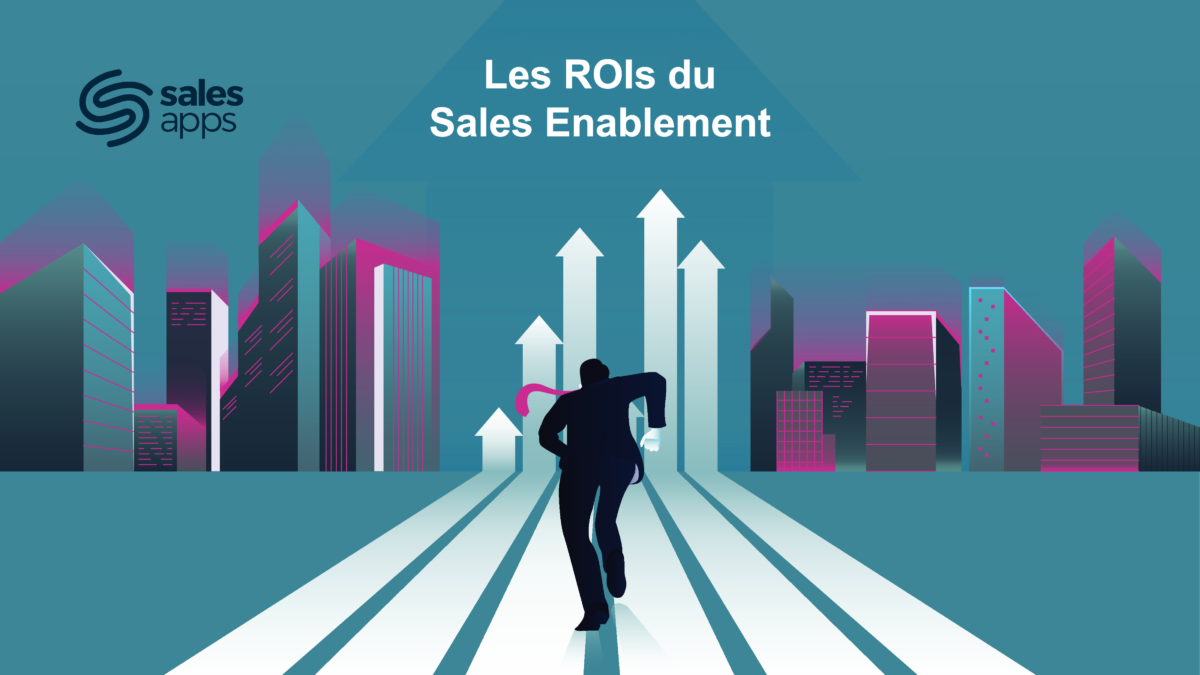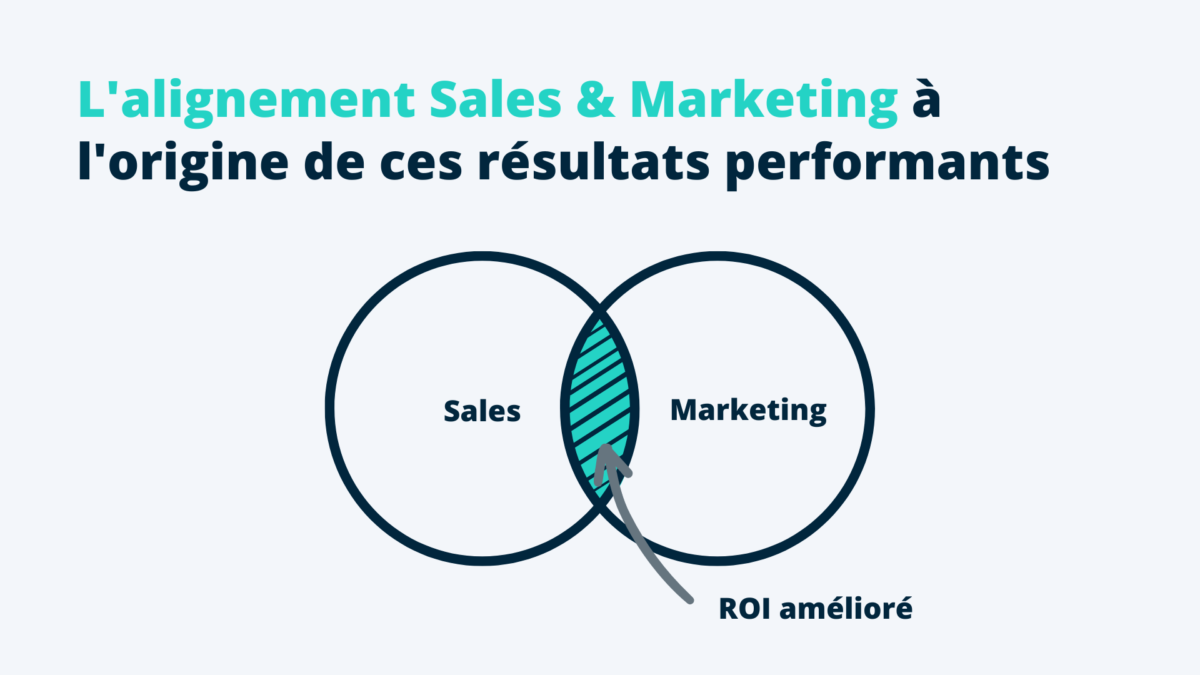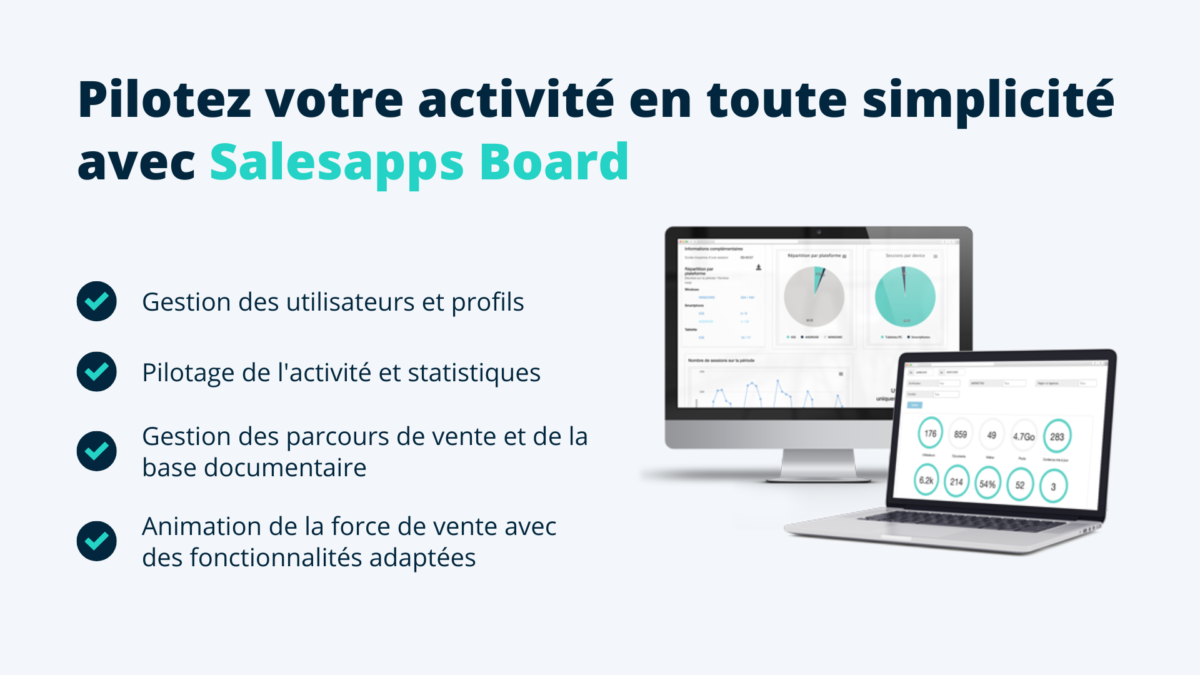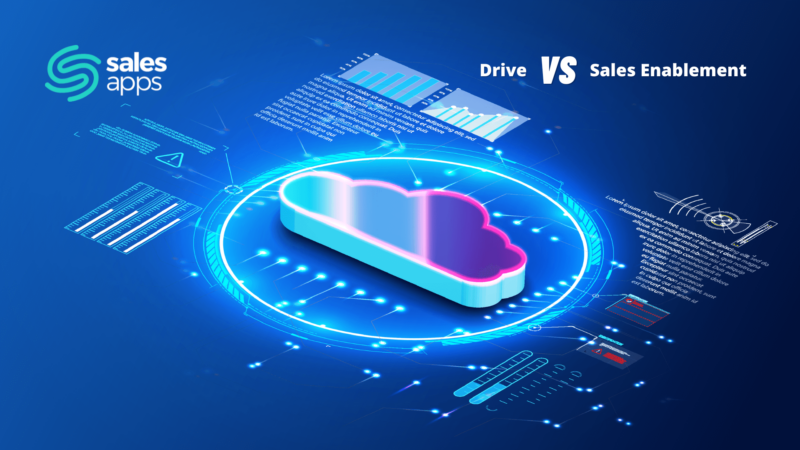
Blog

Les directions marketing, quelle que soit leur stratégie, continuent de faire face à une évolution rapide des comportements d’achat B2B, avec des acheteurs plus autonomes et informés, et une concurrence beaucoup plus présente. Cette conjonction de facteurs crée un environnement dans lequel les CMOs doivent ajuster leurs plans d’actions et mesurer le ROI de leurs investissements pour un maximum d’efficacité.
C’est ce que souligne une étude menée par LinkedIn révélant que 77 % des directeurs marketing se sentent sous pression pour prouver le ROI des campagnes marketing. S’engager dans une démarche de Sales Enablement offre des gains rapidement observables à travers les leviers de productivité qu’elle apporte, et entraîne les équipes Sales & Marketing vers une organisation plus agile dans la conduite de sa stratégie.
Quels sont les ROIs du Sales Enablement ?

L’application de Sales Enablement apporte un alignement Sales & marketing en temps réel, elle permet de développer significativement la performance commerciale de la force de vente pendant et en dehors des rendez-vous, et crée une nouvelle expérience de vente avec les clients. Nous pouvons évaluer les ROIs du Sales Enablement au travers de 4 catégories :
1- Un alignement sales & marketing en temps réel
Transformez les contenus marketing en contenus pour la vente ! Le bon argument au bon moment ! Alignez sales & marketing au travers d’une application de Sales Enablement va garantir son usage et la mise à jour en temps réel des contenus utilisés par les forces de vente au quotidien.
Ces contenus, disponibles sur l’ensemble des devices y compris hors connexion (Ordinateur, Tablette, Mobile), sont directement accessibles dans les parcours de vente du commercial(e) lors de ses rendez-vous ou pour la préparation de ces derniers.
Les synergies entre le management, les équipes marketing et les équipes terrain sont renforcées, les délais de remontées des informations du terrain et d’analyse sont réduits, la prise de décision qui s’appuie sur des KPIs clairs est accélérée.
2– Une performance commerciale accrue
L’application de Sales Enablement est le meilleur allié de votre commercial(e). Avant le rendez-vous, elle lui permet d’accéder plus facilement à ses contenus marketing, de créer une présentation personnalisée simplement & rapidement, et après le rendez-vous, de dégager un temps précieux grâce à l’automatisation des comptes rendus de visite dans le CRM. Un gain de temps estimé à 45min sur la préparation d’un RDV selon Hervé Carette, Chef de Projet Innovation à EDF.
Étant libéré de ses tâches administratives, le commercial peut consacrer davantage de temps à la réalisation d’autres rendez-vous. C’est le constat avec Aurélie Meslage, Directrice du Développement Commercial chez Orangina Suntory France, et son équipe qui a réalisé en 1 an 3000 visites en plus, aboutissant à un chiffre d’affaires supplémentaire de 800 000 euros. Sophie Saussier, Responsable Outils d’Analyses et d’Aides à la vente chez Moët Henessy Diageo France atteste aussi de ce résultat avec plus de 1200 rendez-vous par mois.
En complément des rendez-vous en présentiel, l’application de Sales Enablement s’avère également redoutable lors des rendez-vous à distance (remote selling). Elle permet notamment de créer l’animation tant attendue par les acheteurs et de démultiplier les rendez-vous. Dès son lancement, JCDecaux a ainsi multiplé ce type de rendez-vous par 10 avec plus de 1800 rdv par mois.
Grâce à son image moderne, sa meilleure maîtrise de l’offre et de l’argumentaire en rendez-vous, le commercial disposant d’un outil de Sales Enablement voit son taux de conversion augmenter de 5 à 15%, parfois plus. Le Sales Enablement est un levier très efficace pour générer plus de signatures comme en témoignent les résultats du Groupe Adéquat avec +12,5% d’augmentation du CA.
NOMAD, l’application déployée par Salesapps pour Adéquat Intérim et Recrutement, a d’ailleurs été élue meilleure application de Sales Enablement par les Trophées Action Co 2022 en comptabilisant des résultats exceptionnels dès la première année :
+ 12,5% du CA sur la cible concernée
+ 10 % du Taux de Marge Brute Travail Temporaire
+ 10 % du prix moyen d’un recrutement
+ 66 % des frais annexes
Enfin et c’est bon pour la planète, la digitalisation des forces de vente permet également de réduire significativement votre budget Print dès lors où vous gérez des catalogues ou brochures. A titre d’exemple, l’entreprise ZOLUX a réduit son budget print de + 90%, soit une économie de 50K€ par an.
3- Une montée en compétence accélérée et une réduction du turn over
Demand Metric évalue la diminution du Ramp up time lié à la digitalisation des outils de commercialisation à 60% en moyenne. Record battu avec Franz Thibault, PDG chez Thibault Bergeron pour qui le temps nécessaire à l’intégration d’un nouveau commercial dans l’entreprise a été divisé par 4. Bien intégré un nouveau talent, c’est le mettre en valeur pour que celui-ci se positionne dans une dynamique de réussite.
C’est aussi lui mettre à disposition les outils et connaissances nécessaires à son évolution. L’application de Sales Enablement permet de concrétiser cette approche grâce à des parcours de formation adaptés et un suivi de la montée en compétence individualisé. Elle a notamment permis au Groupe Adéquat de réduire de 30% le turnover sur 1 an.
4- Une force de vente conquise
Pour garantir le succès de votre stratégie de Sales Enablement, les enjeux du marketing et les besoins des équipes terrains doivent être pris en compte lors de la co-construction de votre application. Création des arborescences, des interfaces graphiques, déploiement complet ou réalisation d’un pilote, formation… Toutes ces étapes sont clés afin d’assurer la réussite de votre projet. A titre d’exemple, le Groupe Adéquat a comptabilisé un taux d’adoption de 100% dans la semaine qui a suivi les formations et un taux d’usage quotidien de 100% pour ses 400 commerciaux.
Salesapps Board et ses KPIs pour piloter facilement votre activité

Les ROIs du Sales Enablement obtenus ci-dessus ne peuvent s’affranchir d’une analyse et d’un suivi régulier des KPIs. Parce que le pilotage de votre activité est primordial dans la réussite de votre stratégie de Sales Enablement, nous avons conçu Salesapps Board ! Une interface qui vous permet de gérer et piloter facilement votre activité. Que cela soit pour suivre le parcours de vente de vos commerciaux en rendez-vous, d’analyser vos statistiques (par session, par utilisateur, par vidéo/document consulté et partagé) ou encore de suivre la montée en compétence de votre force de vente… Salesapps Board sera votre meilleur atout pour analyser vos KPIs et prendre les bonnes décisions.
Pour explorer l’ensemble des KPIs proposés par le Sales Enablement et découvrir plus de ROIs générés par des entreprises comme EDF, Figaro Classifieds ou encore GEODIS Distribution & Express, nous vous proposons de lire notre Livre Blanc KPI & ROI du Sales Enablement.





